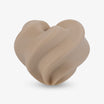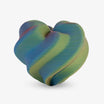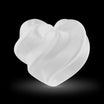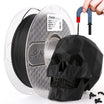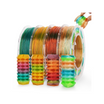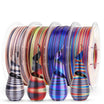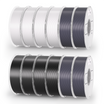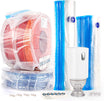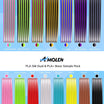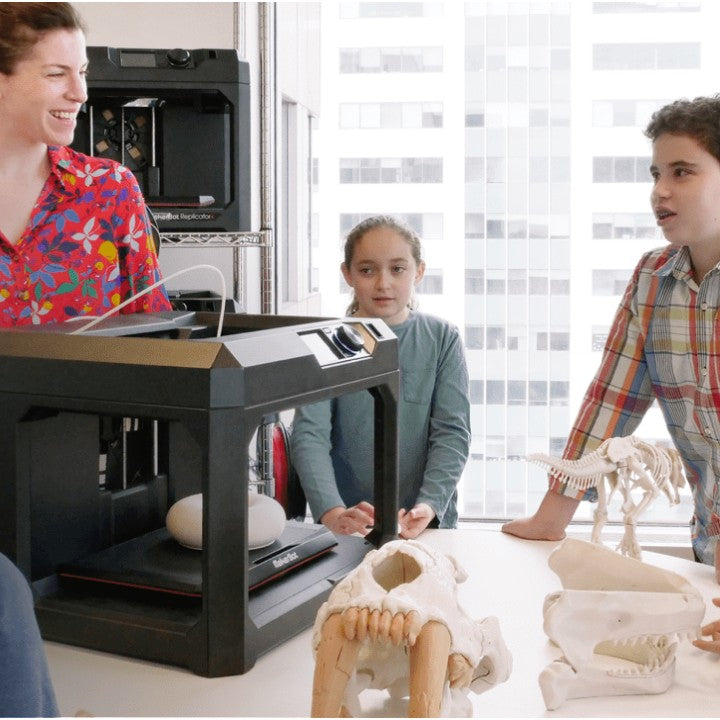3D printing, also known as additive manufacturing, has been widely used in various fields in recent years. With the continuous development of technology, the current and future application scenarios of 3D printing are becoming more diverse and innovative. In this article, we will introduce some of the current and future application scenarios of 3D printing.
Current 5 application scenarios:
1. Medical field:
3D printing technology can be used to create customized implants, prostheses, and medical models. For example, 3D printing can be used to produce customized implants that are more compatible with the patient's bone structure, which can significantly reduce the risk of implant failure. In addition, 3D printing can also be used to create medical models for surgical planning and simulation.

2. Aerospace industry:
3D printing technology is an important tool for the aerospace industry. It can be used to produce complex and lightweight components for aircraft and spacecraft, which can reduce weight and increase fuel efficiency. In addition, 3D printing technology can also be used to repair damaged components on the aircraft, which can reduce maintenance costs and downtime.
3. Architecture and construction:
3D printing technology can be used to produce large-scale building components, such as walls, floors, and ceilings, which can significantly reduce construction time and costs. In addition, 3D printing can also be used to produce customized architectural elements, such as facades and ornaments.

4. Fashion industry:
3D printing technology can be used to create personalized clothing, jewelry, and accessories. This technology enables designers to produce complex and unique designs that are not possible with traditional manufacturing methods.
5. Education:
3D printing technology can be used to create educational models and prototypes, which can enhance students' understanding of complex concepts and theories. In addition, 3D printing can also be used to produce teaching aids and tools for teachers.

Future 5 application scenarios:
1. Food production:
3D printing technology can be used to produce customized food products, such as chocolate, pasta, and pizza. This technology can also be used to create new food textures and shapes that are not possible with traditional cooking methods.
2. Energy industry:
3D printing technology can be used to produce complex and customized components for renewable energy systems, such as wind turbines and solar panels. This technology can also be used to create new energy storage solutions, such as batteries and capacitors.

3. Space exploration:
3D printing technology can be used to produce components and tools for space exploration missions. This technology enables astronauts to produce and repair parts on demand, which can significantly reduce the cost and risk of space missions.
4. Biotechnology:
3D printing technology can be used to create complex and functional human tissues and organs, which can be used for drug testing and transplantation. This technology also enables researchers to produce customized implants and prostheses that are more compatible with the patient's body.
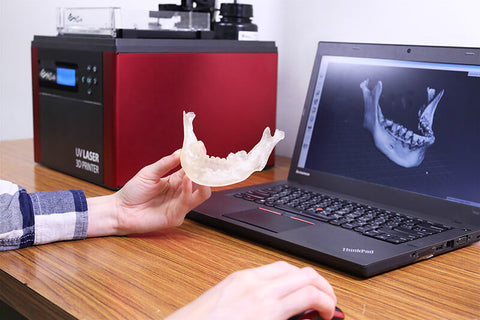
5. Recycling and sustainability:
3D printing technology can be used to produce new products from recycled materials, which can significantly reduce waste and promote sustainability. This technology also enables designers to produce products that are more eco-friendly and efficient.

Conclusion
3D printing technology has broad application prospects in various fields. With the continuous development of technology, we can expect to see more innovative and creative applications of 3D printing in the future.








